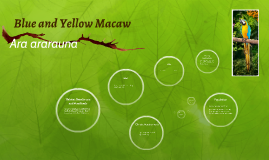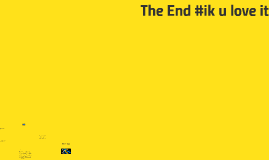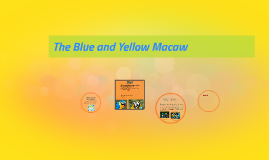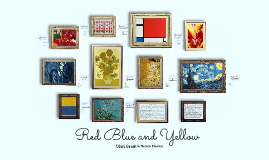Red Blue and Yellow
Transcript: Red Canna An Introduction to Red Blue and Yellow Mondrian's work is very abstract and geometric. It is composed of squares, rectangles, and thick lines. He made this work out of the De Stijl movement based off his Neo-Plastic ideology. Mondrian's paintings on canvas focus on the material properties of paint and its ability to abstractly express ideas with line and color. Mondrian believed abstraction was a better depiction of reality than naturalistic depictions. Composition with Red, Blue, and Yellow demonstrates Mondrian's commitment to opposites, asymmetry, and pure planes of color. There is a harmony of contrasts through asymmetrical placement of primary colors to balance the white. He also varied the shades of blacks and whites to create harmony. The piece evokes a sense of stability and solidarity. Mark Rothko was a Jewish-Russian artist that rose to prominence as one of the most famous artists of the 20th century. His new form of expression led to his Color Field paintings, which used shimmering color to portray a sense of spirituality. This monumental piece by Mark Rothko has a glowing aurora of shimmering color and light. It has been described as "deeply philosophical" where a "moving and breathtaking union" takes place. Viewers get a transcendental experience in which you feel engulfed by the monumental, radiant painting with an other-worldly aura. Rothko recommends standing 18 inches from the canvas to experience its true presence. He wanted to create paintings that seemed to breathe from deep inside with the use of his colors. Untitled (Yellow and Blue) recently sold for $46.5 million dollars at Sotheby's Auction. Maria Altmann's Fight to Win Adele back At first glance, these "simple" colors may be overlooked. However, red, yellow, and blue make up the primary color triad in a standard artist's color wheel. These three primary colors are essential to the standard artist's color wheel. In this presentation, our goal is to show how the seemingly simple primary colors of red, blue, and yellow can evoke a wide range of responses and emotions from viewers and create such a variety of interpretations. Looking at each red, blue, or yellow piece carefully, think about what first impression, response, or emotion each piece evokes in you. Title: Portrait of Adele-Bloch Bauer I Artist: Gustav Klimt Date: 1907 Medium: oil, silver, and gold on canvas Size: 54" x 54" canvas Source link: http://www.nytimes.com/2006/06/19/arts/design/19klim.html?_r=0 A canna is a lilylike, tropical American plant. Georgia O’Keeffe magnified her flowers to make viewers stop and really appreciate the beauty that a tiny flower has, which people often overlook. O’Keeffe literally wanted people to "stop and smell the flowers." O'Keeffe also used a Dow-Japanese arrangement of lights and darks in her works. By using this system she explored free movement of gesture in bold striking strokes. The limited palette of color- red, yellow, orange, and purple allowed the colors to interact within themselves. Viewers and critics alike often think that O'Keeffe's works have a sense of sensuality to them and allude to female anatomy. However, O'Keeffe completely rejects this notion; she is quoted as saying "...you write about my flower as if I think and see what you think and see of the flower—and I don’t." Title: Starry Night Artist: Vincent Van Gogh Date: 1889 Medium: Oil on canvas Size: 2'5" x 3'0" canvas Source link: https://www.khanacademy.org/humanities/becoming-modern/avant-garde-france/post-impressionism/a/van-gogh-the-starry-night The Dessert: Harmony in Red (the Red Room) Warhol is an icon leading artist of the pop art movement. He is most known for his various versions of Campbell soup. Warhol wanted to appeal to a wide variety of people as well for his audience to be familiar to his content. At first glance this specific work may seem repetitive, but all the soup cans have different labels. At the time Warhol made this, Campbell Soup Company sold 32 different flavors of soup. Since Warhol did not indicate how he wanted the canvas to be installed, they were just hung in chronological order of when the soup was released. The first soup can is the tomato soup that was introduced in 1897. Warhol brought up the discussion of how companies manufacture their products whether he wanted or not. He used a rubber stamp to paint on the fleur de lis along the bottom rim of the can. This can reflect how almost everything is made in a factory and not hand made anymore. It takes away from the individuality of the product. This painting was the forth version of Van Gogh's second series of sunflowers. He painted this series while waiting for the arrival of Paul Gauguin. The purpose of these painting were to decorate a room in what Van Gogh described as the Yellow House that Gauguin rented in Southern France. In Dutch Literature sunflowers were a symbol of devotion and loyalty. Van Gogh expressed what he wanted as a friendship with Gauguin. The yellow

















